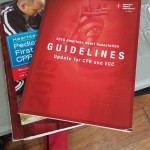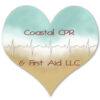 The new 2015 CPR and ECC Guidelines were released in October of 2015. This post is the beginning of a series of the 2015 changes to CPR and First Aid.
The new 2015 CPR and ECC Guidelines were released in October of 2015. This post is the beginning of a series of the 2015 changes to CPR and First Aid.
Studies about CPR and First Aid are always ongoing. Every 5 years the information from this research is used to publish new Guidelines to help save and improve lives. In 2010 major changes were made in how we perform and teach CPR. On October 15, 2015, the new Guidelines were released. The changes are not dramatic, but rather are subtle tweaks. This post is the beginning of a series to look more in depth and each change.
A quick summary of the updates:
There are more updates and each will be covered in more detail.
This post is part of a series of the 2015 Guidelines for CPR and ECC published by the American Heart Association. You can view the web-based integrated guidelines on the AHA’s CPR website at www.cpr.heart.org.
